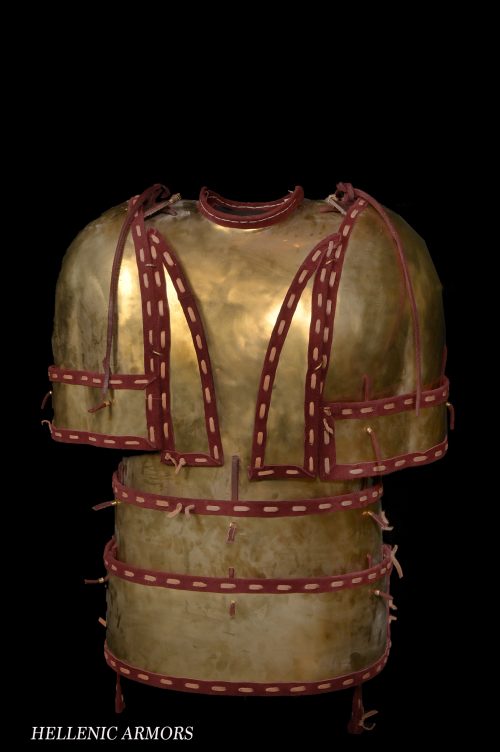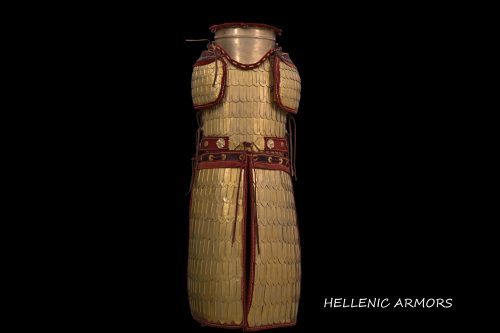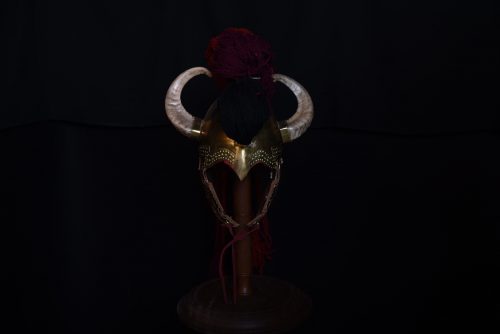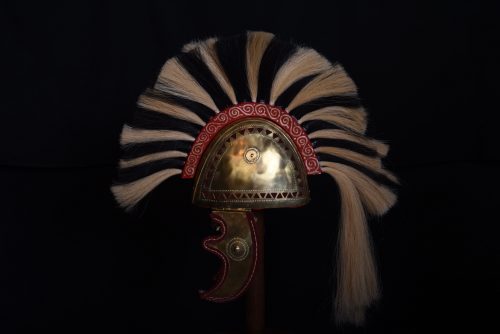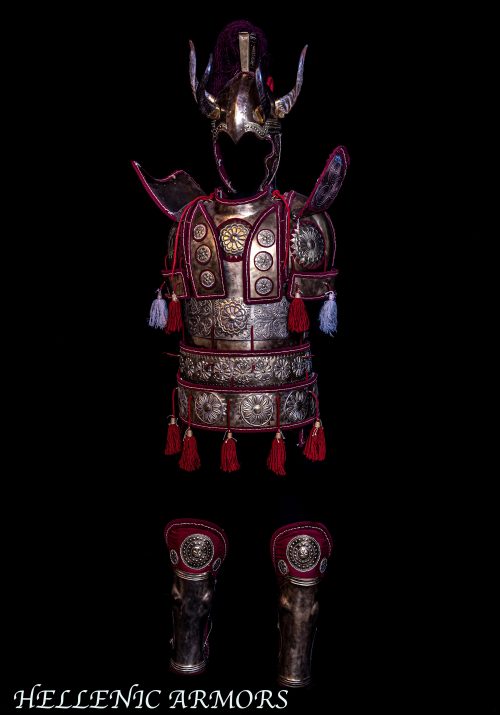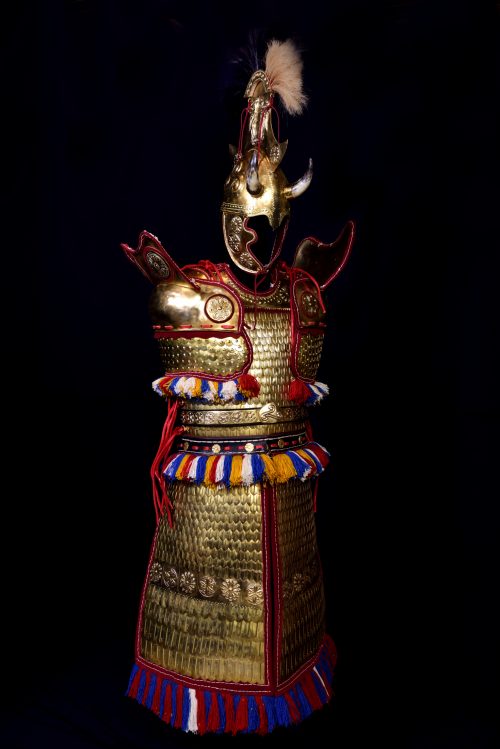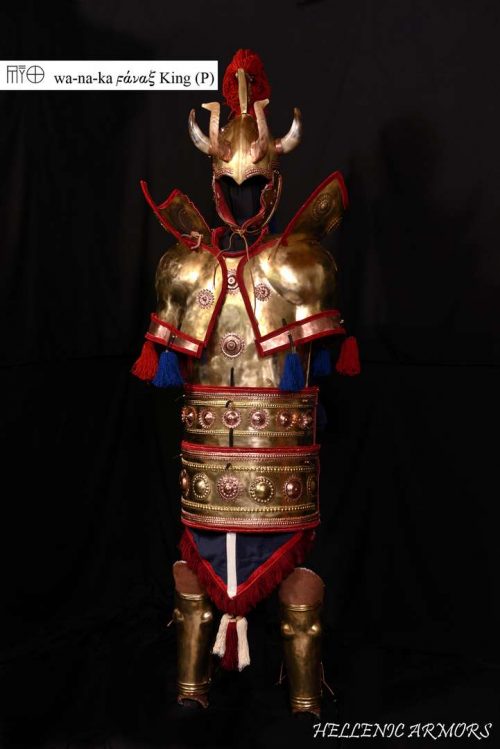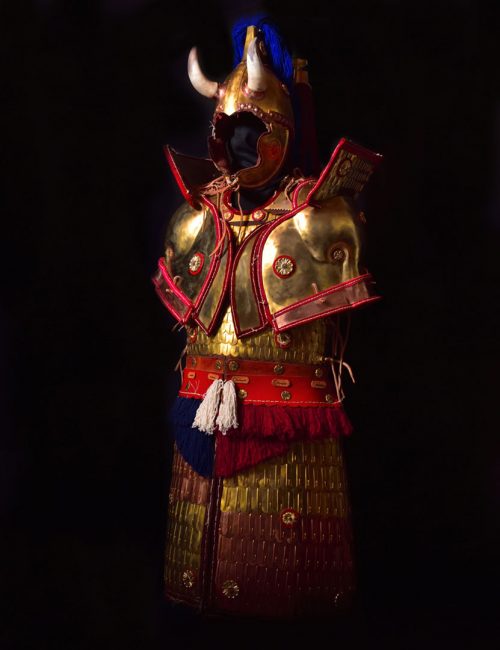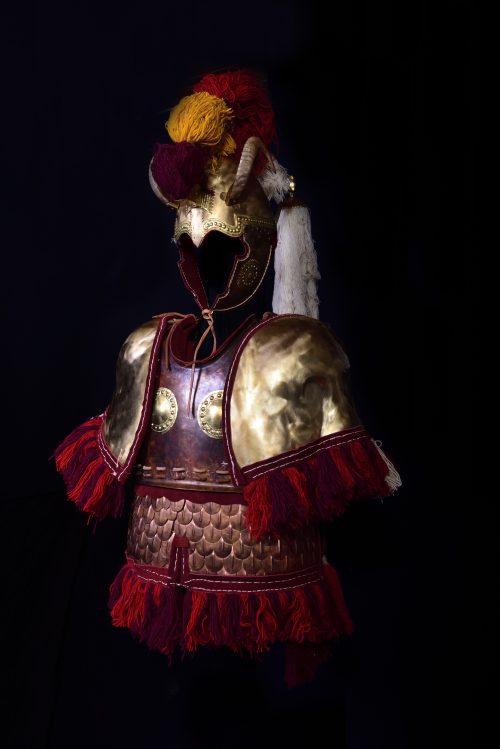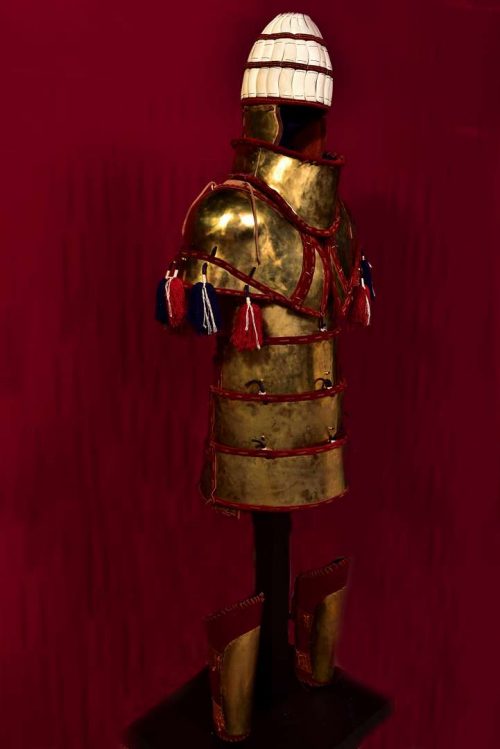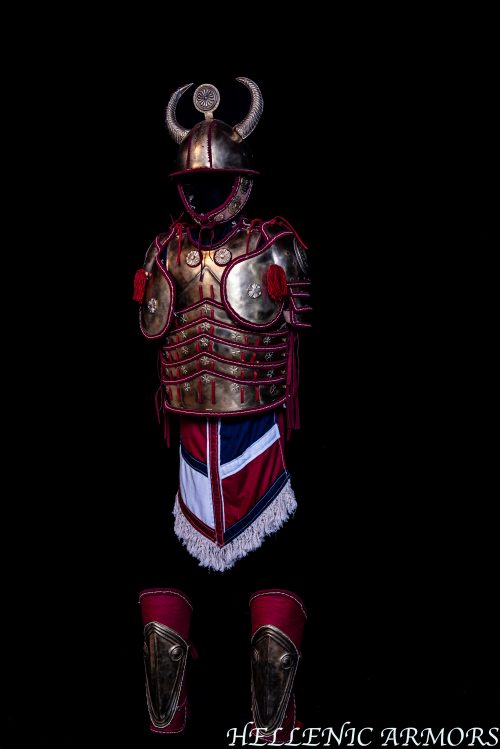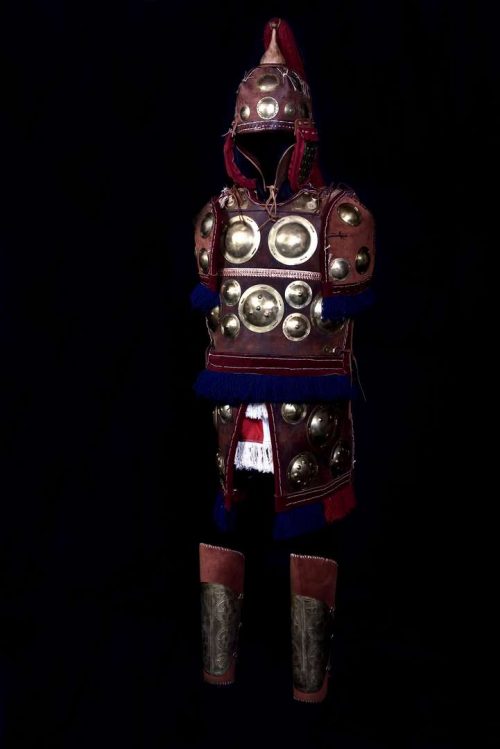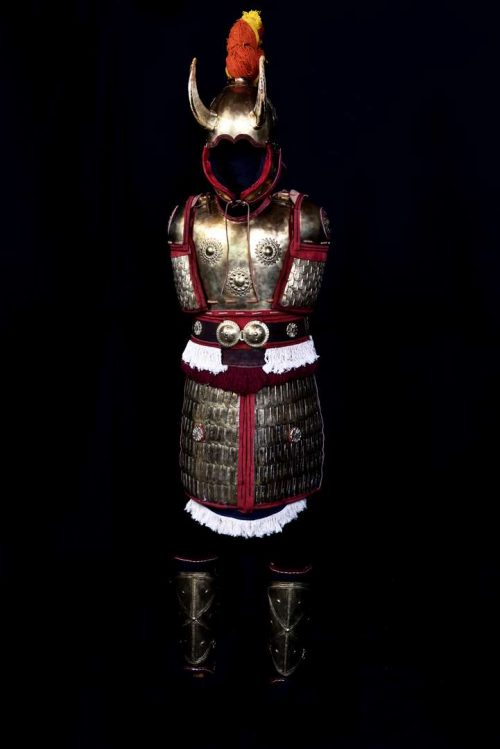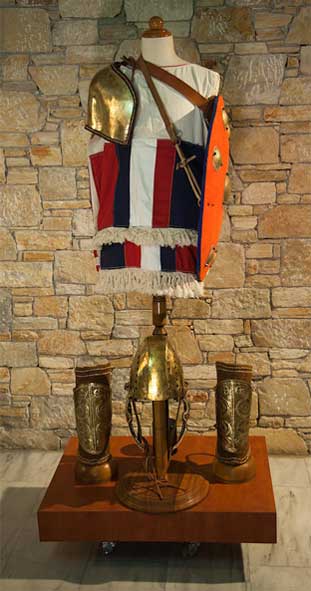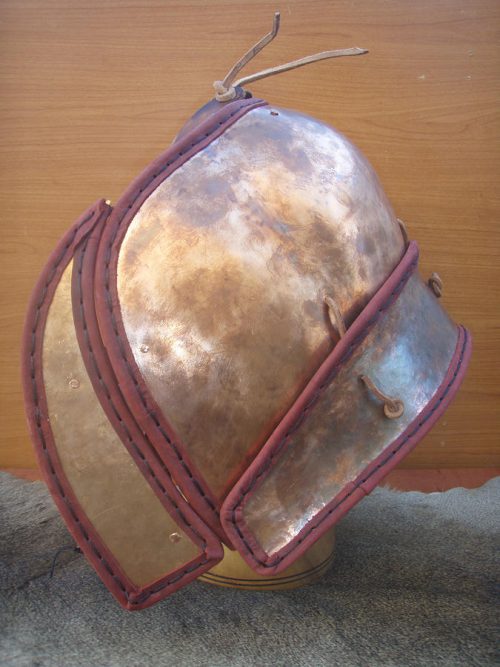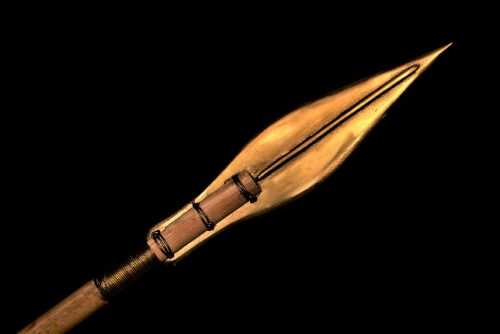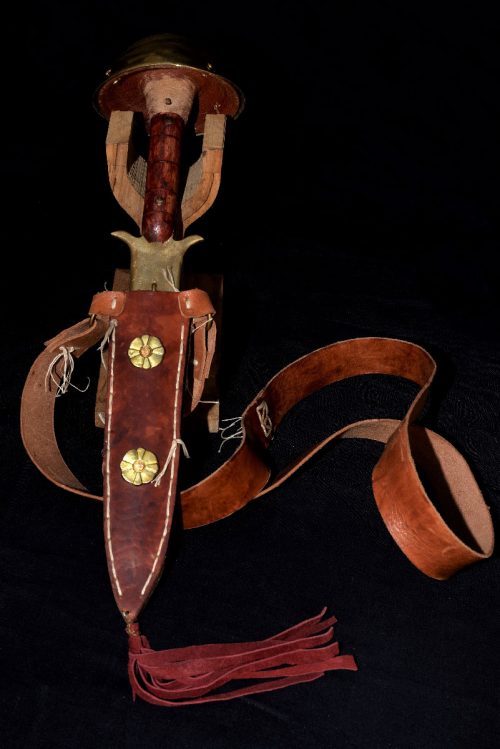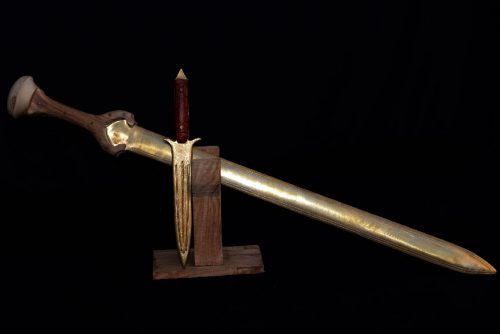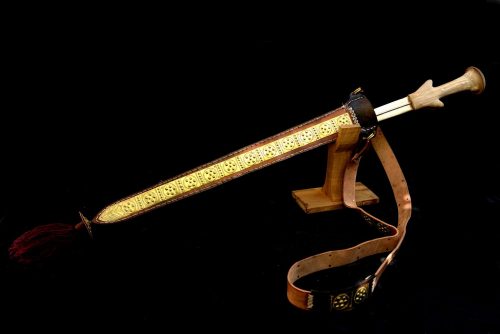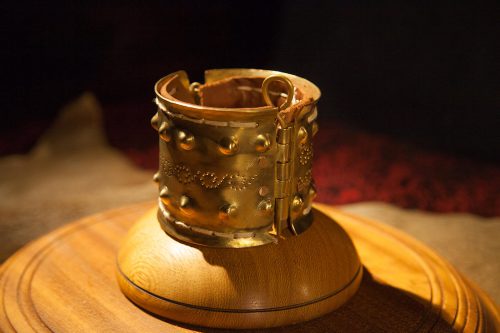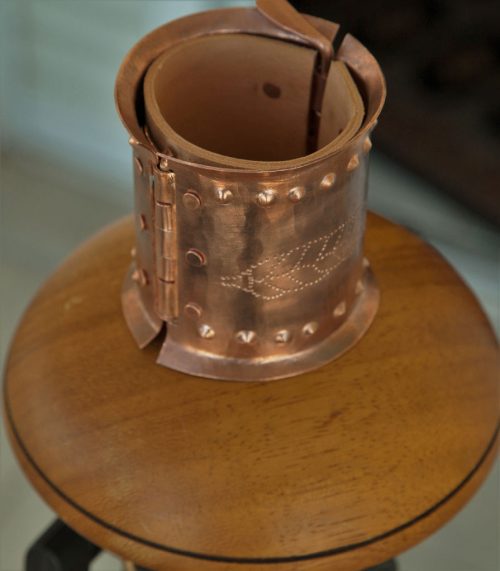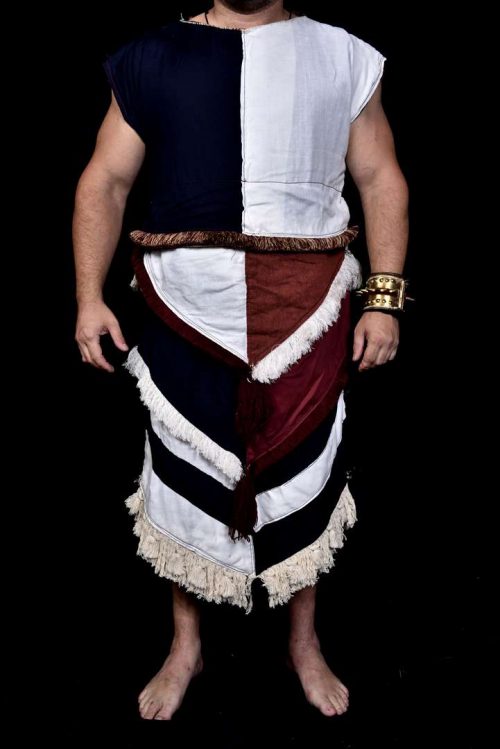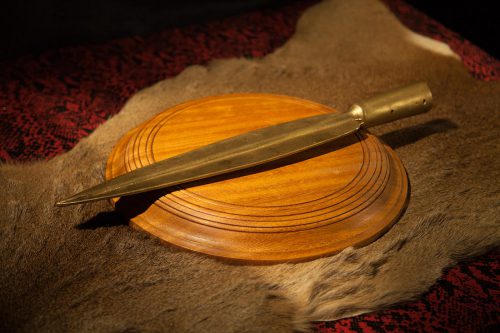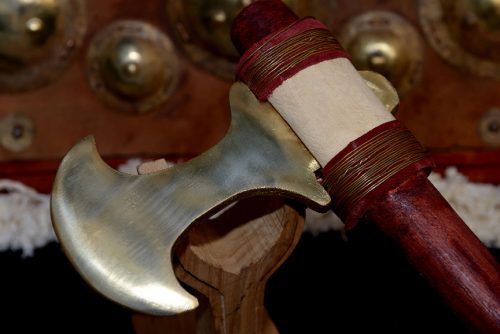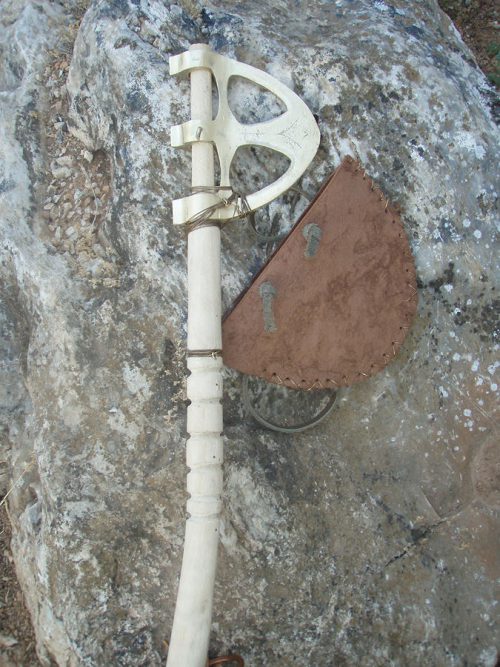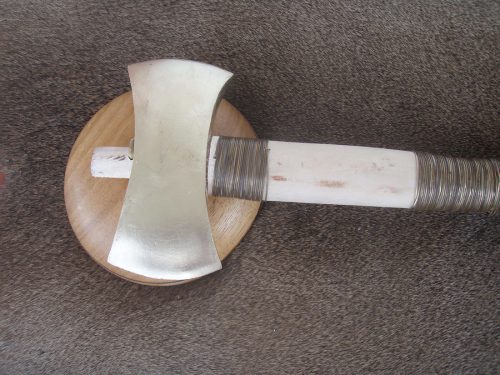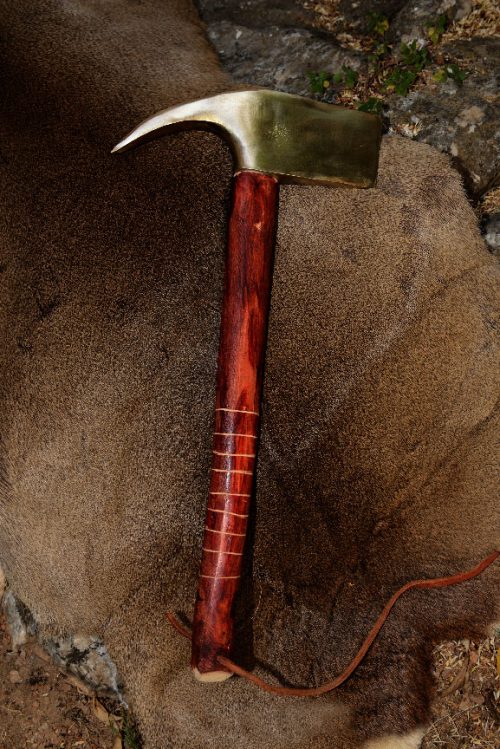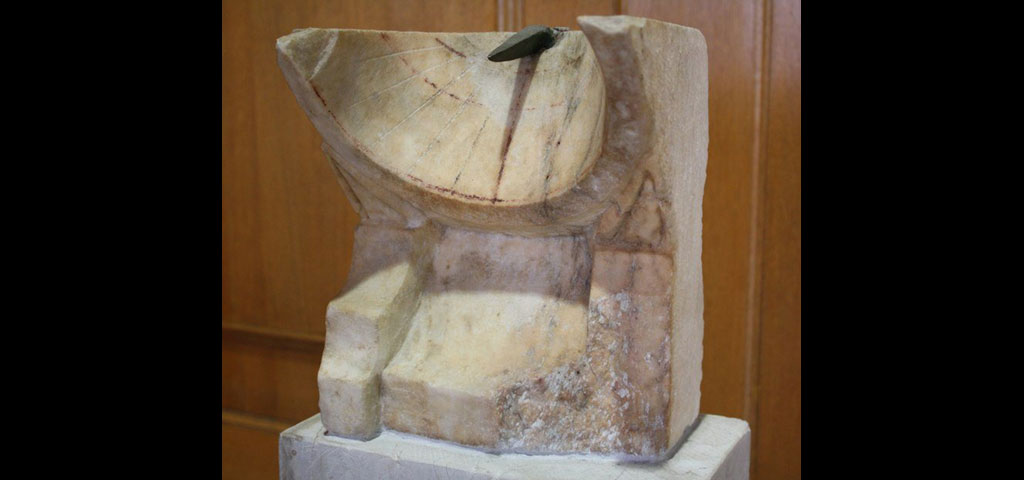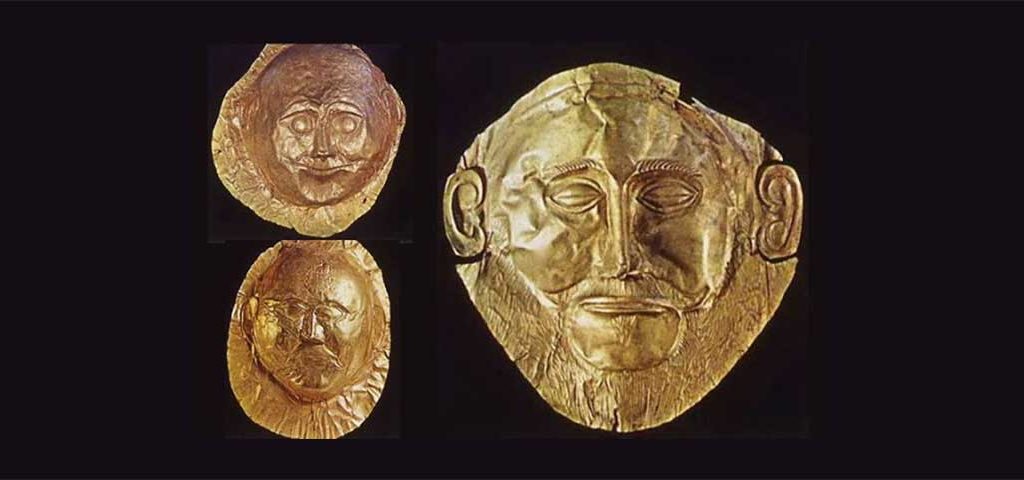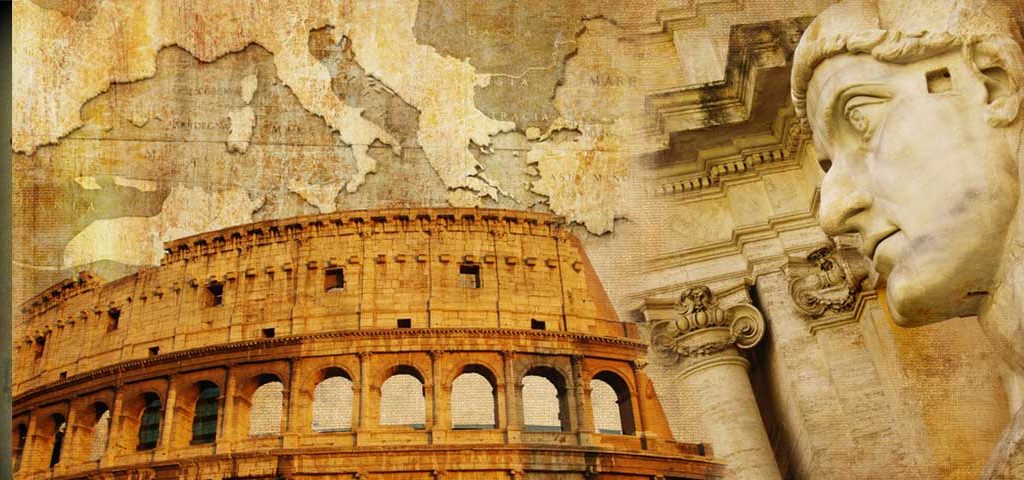Mycenaean Armor
1600-1100 B.C.
Undoubtedly the Late Helladic era (15th -11th century BC), well known as Mycenean period, is characterized as a vivid war-centric society. Warfare was a semantic element of the Achaeans especially till the middle of the 13th century BC when the geographical territories/boundaries of the several small Kingdom-states (e.g Dendra, Tyrins,Thebes, Mycenae) situated in South Greece were stabilized. The archaeological findings reveal that during the 15th century BC the military industry in Peloponnese was flourishing side by side with the growing commercial economy and complexity of the Mycenean society. Luxurious imported decorative goods from the Middle East, impressive tombs, palaces etc. prove that the society was in great motion driven by ambitious rulers. Armors, as valuable signs of military superiority and high ranking possessings became essential part of the everyday life of ruling elites. Texts tablets written in Linear-B contain numerous references directly connected with military defensive gears and even some ideograms actually depicts breastplates ("to-ra-ka").
Numerous archaeological findings from all over the Mainland Greece and Crete have been identified as armor components, this huge variety in shape and sizes reflects the prosperous and long-lasting military production of defensive devices. “Dendra” armor from Argos region, the only intact body cuirass of Bronze Age till today is the best prove for a such claim, high sophisticated and fully functional.
The echo of the strong militarized Mycenean society is being reflected by the Homeric Epic of Iliad, almost four hundred years after the collapse of Bronze Age word in Greece. All the main battle heroes e.g Achilles are described with shiny defensive gears close connected to Mycenean style.. even though epic was written some centuries later from that early period. The heroic attitude of the Archaic and Classical times is rooted to the Golden Age of Achaean warlords and their majestic armors leaving behind an eternal influential legacy.
In this very section have been reconstructed, based on archaeological findings, a variety of armors of various typologies plate, organic, composite etc. Textile linen, leather and bitten bronze have been used with caution in order to come in modern times some specimen of Mycenean armament.
